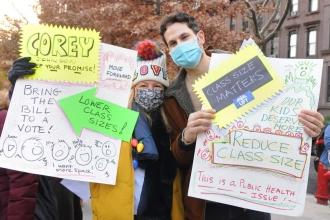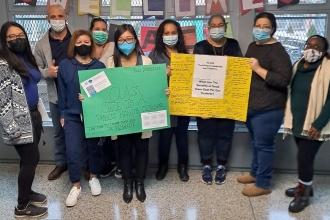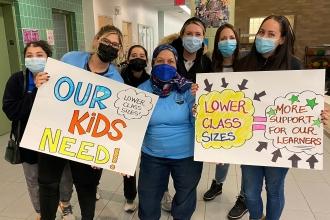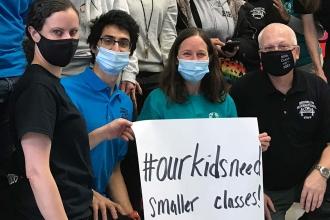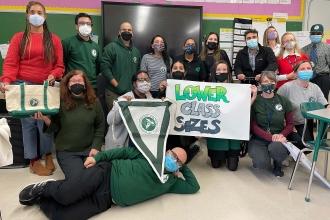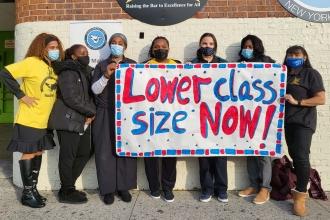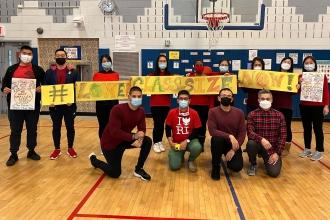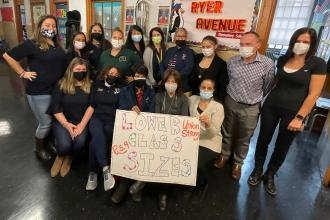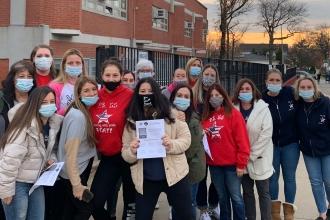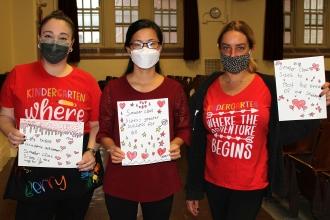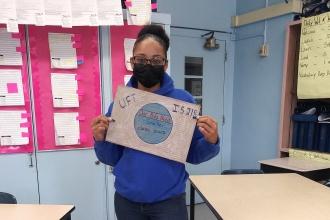UFT members, parents fight for classroom occupancy limits
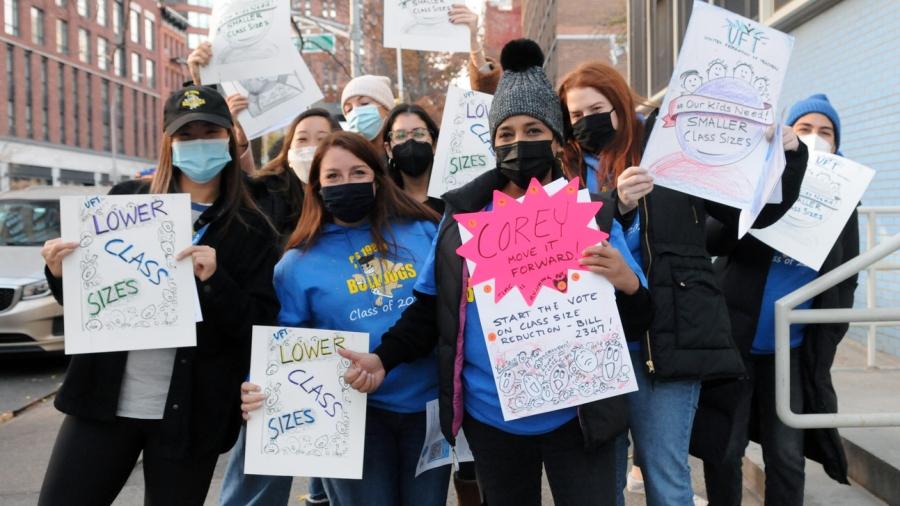
Members from co-located PS 198 and PS 77 in Manhattan join together to demonstrate for lower class sizes.
Thousands of UFT members and parents came together this fall to press the City Council to pass groundbreaking legislation that would reduce class sizes in city public schools by a quarter to a third.
Large class sizes have been a pressing concern of city educators and parents for decades. The union and school communities saw an opening with the COVID-19 pandemic to approach the issue from a new vantage point this year: setting stricter occupancy limits for classrooms to help prevent the spread of disease.
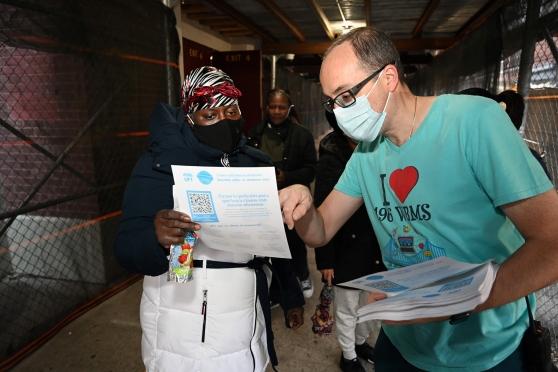
Members from co-located PS 198 and PS 77 in Manhattan join together to demonstrate for lower class sizes.
“If we cannot finally agree as a city in the middle of a pandemic that we need a plan to lower our class size, I don’t know where we’re ever going to get to it,” UFT President Michael Mulgrew testified at a City Council Education Committee hearing in November.
The Council bill would change the health section of the city’s administrative code to mandate minimal square footage of 28 to 35 square feet per student. The standard varies by room size and grade level, so the average elementary school classroom of 650 square feet could house no more than 20 children, while the number of high school students in a 750-foot classroom would be capped at 26. The new limits would be phased in over five years.
Classroom occupancy limits have not been updated in the administrative code since 1938, during a tuberculosis outbreak.
The bill would not affect the class size limits in the DOE-UFT contract.
Nearly 44,000 people signed a petition calling on city leaders to seize this “once-in-a-lifetime opportunity” to lower New York City class sizes.
Thousands of members used online organizing toolkits provided by the union to take action on social media, send emails and make phone calls in a concerted effort to push City Council Speaker Corey Johnson to schedule the bill for a vote in December.
More than 200 school communities participated in the union’s Day of Action on Dec. 1 or Dec. 2. Members in some schools wore the same color to demonstrate their unity on the issue and other school chapters passed out leaflets to parents, organized demonstrations in front of their schools or made phone calls or sent emails to Johnson.
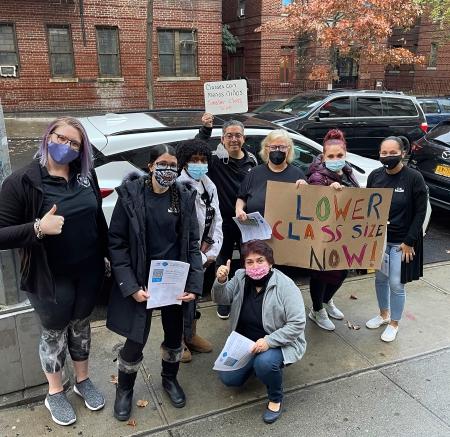
PS 85 in the Bronx took the fight to the streets.
Parents and UFT members from District 2 organized a demonstration and dropped off petitions and hundreds of thousands of letters outside Speaker Johnson’s district office near Madison Square Garden on Dec. 7.
To launch the new phase of the union’s #OurKidsNeed campaign, nearly 700 members participated in a virtual forum on class size on Nov. 15, sharing their stories about what class size means to them as educators.
“They set us up for a more difficult classroom culture when we have more than 25 kids,” said bilingual teacher Yojhanna Cruz, the UFT chapter leader at Bedford Park Elementary in the Bronx.
A number of teachers said they felt they did some of their best teaching during the pandemic due to the lower class sizes required by social distancing constraints.
“I usually teach five classes of 30-plus students. To get students individualized attention, that’s out of the question,” Daniel Smith, a teacher at Marie Curie HS in the Bronx, said at the UFT forum.
Equity was another major issue among educators and parents. New York City ranks 664th in class size out of 675 New York State school districts.
At a Dec. 9 press conference before the Council’s first meeting of the month, Mulgrew said the city’s children can’t wait anymore for equitable class sizes after the pandemic made it “the hardest year” New York schools have ever seen.
“It is now time for our children to have the same class sizes as the rest of the state,” he said.
Lilibeth Feliciano, the mother of twins at PS 51 in Manhattan, was among the parents and class-size advocates who spoke at the press conference.
“Smaller classes should be a simple yes,” said Feliciano. “Yes, to more time for our children to have with their teachers. Yes, for more time on social-emotional learning and social justice.”
Feliciano said she was “one of thousands of parents anxious for New York City to do right by our children.”
By December, the bill had gained the support of 41 members of the Council — a veto-proof majority. However, Speaker Johnson failed to put the measure up for a vote.
But the fight for smaller class sizes will continue in 2022. Mulgrew said the union was already working with the newly elected Council members to secure their support for the bill and was also exploring ways that Albany lawmakers might help.
“This is a movement of educators, parents and students fighting for smaller class sizes,” said special education teacher Ryan Bruckenthal, a UFT delegate at Beacon HS in Manhattan, “and fighting for the schools our students deserve, by whatever means we have at our disposal, whether that’s city or state legislation, litigation or our contract.”
